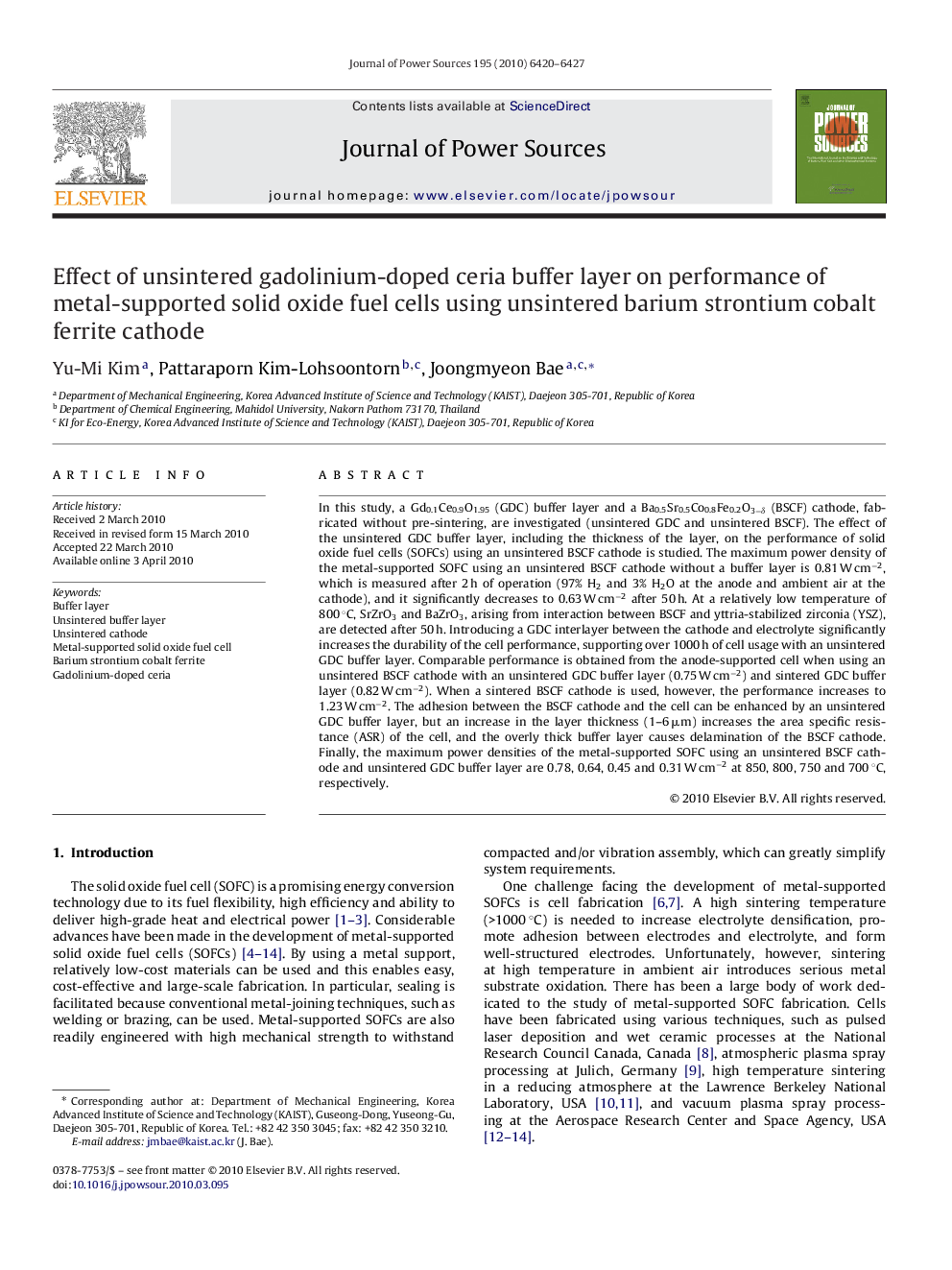| Article ID | Journal | Published Year | Pages | File Type |
|---|---|---|---|---|
| 1289361 | Journal of Power Sources | 2010 | 8 Pages |
In this study, a Gd0.1Ce0.9O1.95 (GDC) buffer layer and a Ba0.5Sr0.5Co0.8Fe0.2O3−δ (BSCF) cathode, fabricated without pre-sintering, are investigated (unsintered GDC and unsintered BSCF). The effect of the unsintered GDC buffer layer, including the thickness of the layer, on the performance of solid oxide fuel cells (SOFCs) using an unsintered BSCF cathode is studied. The maximum power density of the metal-supported SOFC using an unsintered BSCF cathode without a buffer layer is 0.81 W cm−2, which is measured after 2 h of operation (97% H2 and 3% H2O at the anode and ambient air at the cathode), and it significantly decreases to 0.63 W cm−2 after 50 h. At a relatively low temperature of 800 °C, SrZrO3 and BaZrO3, arising from interaction between BSCF and yttria-stabilized zirconia (YSZ), are detected after 50 h. Introducing a GDC interlayer between the cathode and electrolyte significantly increases the durability of the cell performance, supporting over 1000 h of cell usage with an unsintered GDC buffer layer. Comparable performance is obtained from the anode-supported cell when using an unsintered BSCF cathode with an unsintered GDC buffer layer (0.75 W cm−2) and sintered GDC buffer layer (0.82 W cm−2). When a sintered BSCF cathode is used, however, the performance increases to 1.23 W cm−2. The adhesion between the BSCF cathode and the cell can be enhanced by an unsintered GDC buffer layer, but an increase in the layer thickness (1–6 μm) increases the area specific resistance (ASR) of the cell, and the overly thick buffer layer causes delamination of the BSCF cathode. Finally, the maximum power densities of the metal-supported SOFC using an unsintered BSCF cathode and unsintered GDC buffer layer are 0.78, 0.64, 0.45 and 0.31 W cm−2 at 850, 800, 750 and 700 °C, respectively.
